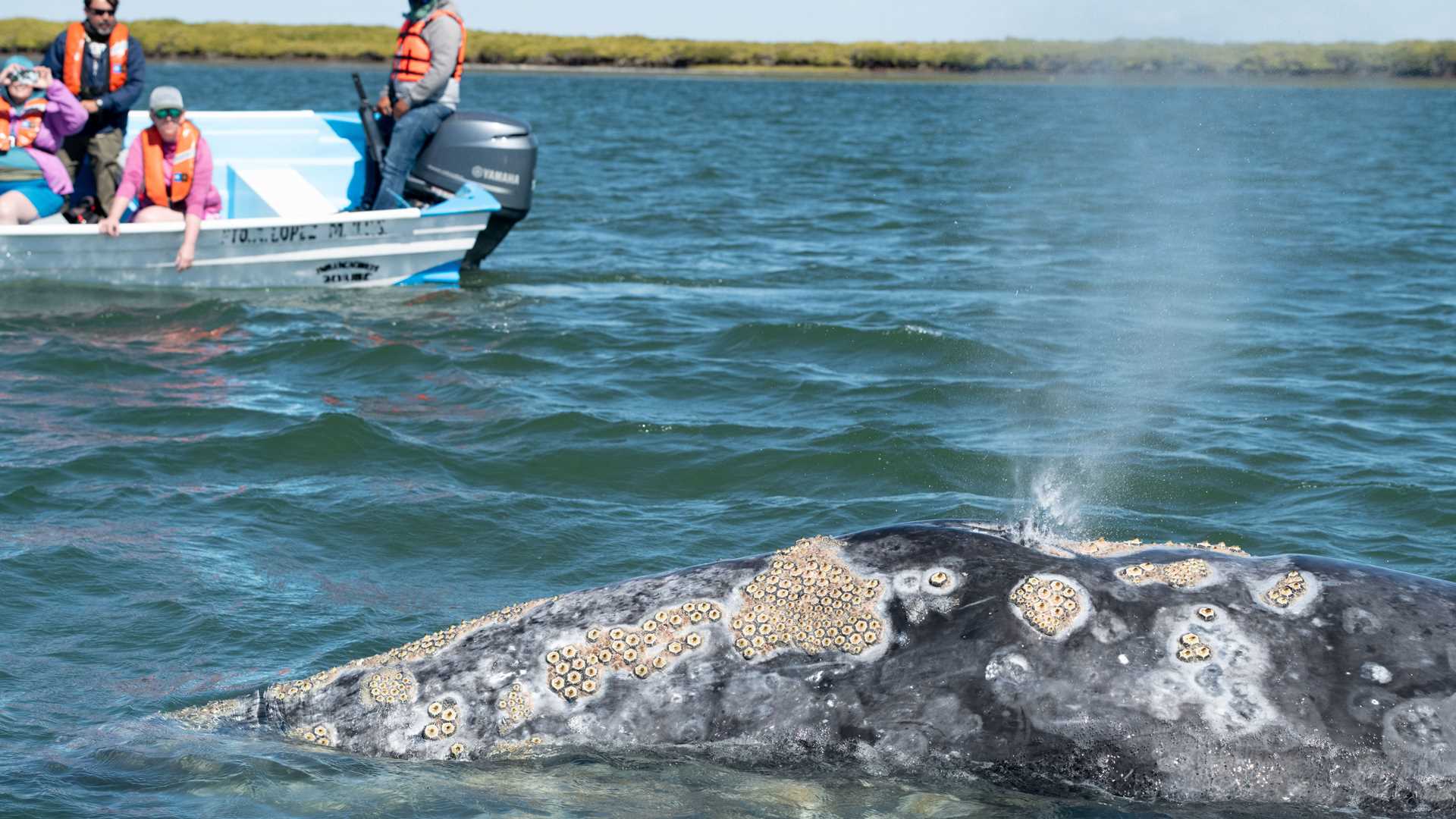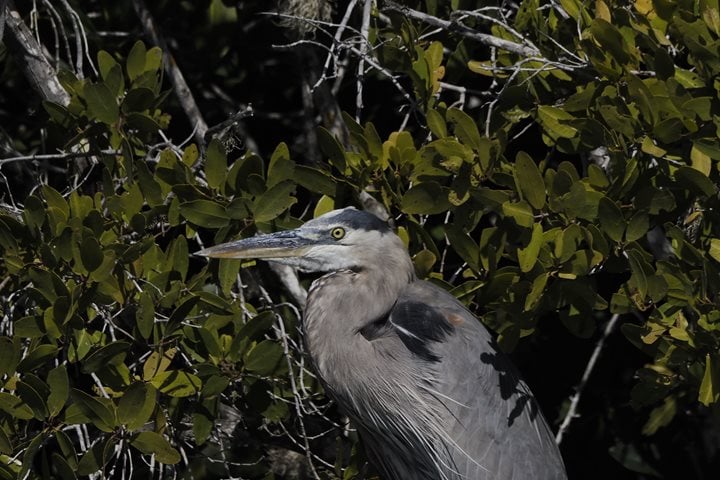A Caspian tern, appearing lighter than air, approaches our panga from the south, dancing like a butterfly on slender wings. From either side of its bright orange dagger-like beak dangles a slim silver fish, which catches the eye of a Bonaparte’s gull flying above. Its black head and beak suggest a serious attitude befitting a bird sharing a surname with a certain French emperor. With conquest on its mind this sunny morning, the gull makes a beeline toward the successful hunter and its catch. They meet––hunter and challenger––above our boat, and a battle ensues. The tern banks right, the gull follows. Left, up, right. The gull stays close, but in this dogfight, the deft tern keeps its prize firm in its clutches, and just out of reach of the pursuer’s hopeful beak.
As the two wrangle a much larger contestant enters the ring. While it is not uncommon for poaching gulls to purloin prey, this newcomer––a female magnificent frigatebird––is known for making its living through such pescatarian thievery. Recognizing it is outgunned, the gull pulls out of the fray. The new contest will not last long. In one swift lunge with its long decurved beak, the frigatebird unnerves the tern, who barely feigns a parry before releasing the fish back into the brine. Both birds circle, spy the sea beneath, and fly their separate ways. Fortunately for all three––tern, gull, and frigatebird––there are plenty more fish in Magdalena Bay.







